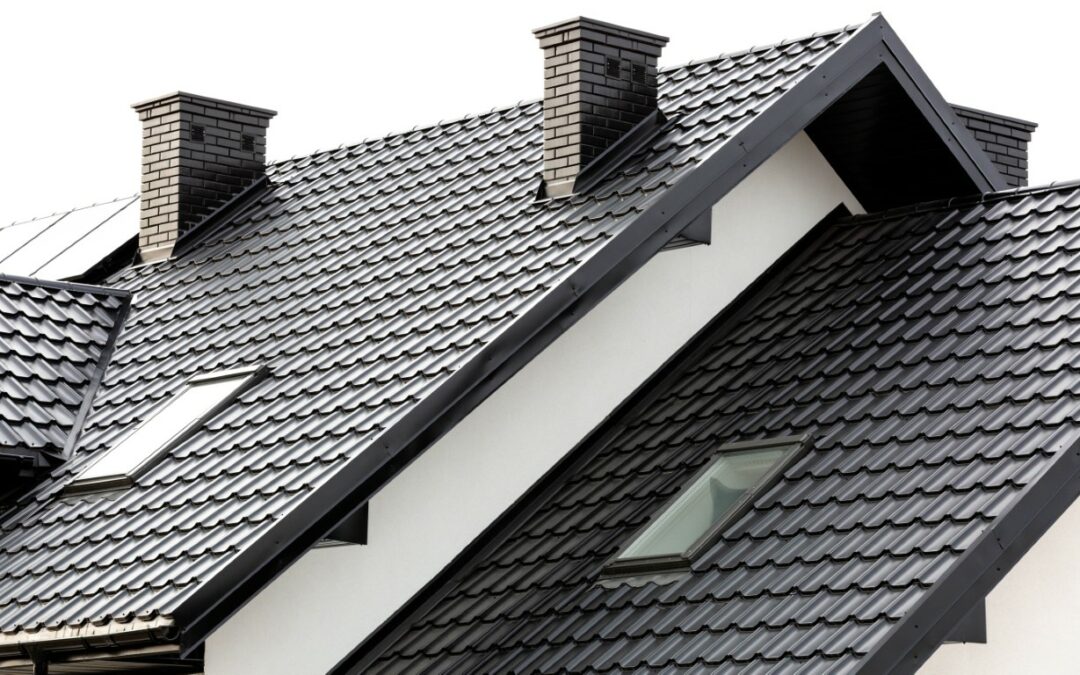We’ve uncovered the ultimate list of the 8 best energy-efficient roofing materials. Get ready to revolutionize your home and save on those energy bills!
From metal roofs to clay tiles, we’ve got options that will keep you cool in the summer and warm in the winter.
With reflective coatings and solar panels, your roof can even generate its energy.
Join us as we explore these cutting-edge materials that will make you feel like part of a sustainable and eco-friendly community.
Key Takeaways
- Metal roofs and cool roofs are energy-efficient options that can reduce the reliance on air conditioning and lower energy costs.
- Green roofs and solar roofs offer multiple benefits, including reduced energy consumption, improved air quality, and potential return on investment.
- Reflective roof coatings reflect sunlight and heat, reducing the need for air conditioning and extending the lifespan of the roof.
- Foam insulation roofs and clay tile roofs provide excellent energy efficiency and insulation properties, reducing heat transfer and minimizing energy consumption.
Metal Roofs
One of the top energy-efficient roofing materials we recommend is metal roofs. Metal roofs are a popular choice due to their durability, long lifespan, and energy-saving properties.
Not only do they come in a variety of colors, allowing homeowners to match their roofs with the overall aesthetic of their homes, but they also have a lifespan of 40 to 70 years, depending on the type of metal used. This longevity significantly reduces the need for frequent roof replacements, saving both time and money in the long run.
Additionally, metal roofs are highly reflective, meaning they can deflect the sun’s rays and prevent heat from entering the home. This helps to keep the interior cooler, reducing the reliance on air conditioning and lowering energy bills.
Metal roofs are a practical and attractive choice for those seeking an energy-efficient roofing solution.
Cool Roofs
Cool roofs offer another energy-efficient option for homeowners looking to reduce their energy consumption. These roofs utilize energy-saving technologies to reflect more sunlight and absorb less heat compared to traditional roofs.
The benefits of cool roofs are numerous. By reflecting sunlight, they help to keep the building cooler, reducing the need for air conditioning and ultimately lowering energy costs. Cool roofs also reduce the urban heat island effect, which occurs when cities become significantly warmer than surrounding rural areas due to human activities.
Additionally, these roofs can extend the lifespan of the roof by reducing thermal expansion and contraction. With their ability to save energy and provide a more comfortable living space, cool roofs are an excellent choice for homeowners looking to maximize energy efficiency.
Now let’s explore another type of energy-efficient roofing option: green roofs.
Green Roofs
Two key advantages of green roofs are their ability to reduce energy consumption and provide additional environmental benefits.
Green roofs have become increasingly popular due to their numerous advantages. One of the main benefits of green roofs is their ability to reduce energy consumption. By adding vegetation to the roof, green roofs provide insulation, reducing the amount of heat that enters the building during the summer and minimizing heat loss during the winter. This can result in significant energy savings and reduced reliance on heating and cooling systems.
Additionally, green roofs offer environmental benefits such as improving air quality, reducing stormwater runoff, and creating habitats for wildlife.
Green roof installation involves the process of adding a waterproof membrane, a layer of soil, and vegetation to the roof. It’s a sustainable and eco-friendly roofing option that offers multiple benefits for both the building and the environment.
Solar Roofs
When it comes to solar roofs, there are three key points that we need to discuss: the cost of installation, long-term energy savings, and the reduction of environmental impact.
Solar roofs can be a significant investment upfront, but they can lead to substantial savings on electricity bills in the long run.
Additionally, by harnessing the power of the sun, solar roofs contribute to a greener and more sustainable future by reducing carbon emissions and reliance on fossil fuels.
Cost of Installation
Installing solar roofs can be a costly investment, but the long-term energy savings make it a worthwhile choice for homeowners. When considering the cost of installation, it’s important to compare the initial expenses of solar roofs with the potential return on investment.
While the upfront cost may seem high, it’s essential to consider the long-term benefits. Solar roofs can significantly reduce or even eliminate monthly electricity bills, resulting in substantial savings over time. Additionally, many governments and utility companies offer incentives and tax credits for installing solar panels, further offsetting the installation costs.
With the advancements in technology and increased demand, the cost of solar panels has been steadily decreasing in recent years, making it a more affordable option. Transitioning to solar roofs not only provides long-term energy savings but also contributes to a sustainable and environmentally friendly future.
Long-Term Energy Savings
With solar roofs, we can reap long-term energy savings by harnessing the power of the sun. Solar roofs are an excellent example of energy-efficient technologies that can significantly reduce our reliance on traditional energy sources.
By using photovoltaic panels to convert sunlight into electricity, solar roofs not only provide clean and renewable energy but also help us save money on our electricity bills. These roofs are designed to maximize solar absorption and minimize energy loss through effective insulation methods.
The insulation helps to maintain a stable indoor temperature, reducing the need for heating or cooling, and ultimately leading to long-term energy savings. With advancements in solar technology, solar roofs have become increasingly efficient and affordable, making them an attractive option for environmentally-conscious homeowners looking to reduce their carbon footprint and save money on energy costs.
Environmental Impact Reduction
To further reduce our environmental impact, we can also explore the benefits of incorporating solar roofs into our homes.
Solar roofs are an excellent way to harness the power of the sun and convert it into clean, renewable energy. By installing solar panels on our roofs, we can generate electricity and reduce our reliance on traditional energy sources. This not only helps to decrease our carbon footprint but also saves us money on our energy bills.
Additionally, solar roofs can be paired with energy-efficient insulation and eco-friendly building materials to create a sustainable and energy-efficient home. With advancements in technology, solar roofs have become more affordable and accessible, making them a viable option for homeowners looking to reduce their environmental impact and save on energy costs.
Reflective Roof Coatings
We can achieve energy efficiency in roofing materials by applying reflective roof coatings. These energy-saving coatings are designed to reflect a significant amount of sunlight and heat away from the building, reducing the need for air conditioning and ultimately lowering energy consumption.
By reflecting the sun’s rays, these coatings prevent the transfer of heat into the building, keeping it cooler and more comfortable. The primary function of these coatings is heat reflection, which helps to maintain a stable indoor temperature and reduce the strain on cooling systems.
Moreover, reflective roof coatings can also extend the lifespan of the roof by protecting it from the damaging effects of UV rays. With their energy-saving properties and protective benefits, reflective roof coatings are an excellent choice for anyone looking to increase the energy efficiency of their building while also reducing their environmental impact.
Foam Insulation Roofs
Foam insulation roofs offer another effective solution for enhancing the energy efficiency of buildings. These roofs are known for their excellent energy-efficient properties, as they provide a high level of insulation and reduce heat transfer. The installation process for foam insulation roofs involves applying a layer of foam insulation directly to the roof’s surface. This foam is typically made from polyurethane or polystyrene and is sprayed onto the roof in liquid form. As it dries, it expands and forms a solid, seamless layer of insulation. This installation process ensures that there are no gaps or seams for heat to escape or enter the building. With their energy-saving benefits, foam insulation roofs can greatly contribute to reducing energy consumption and improving the overall energy efficiency of a building.
Transition: Now that we’ve explored the benefits of foam insulation roofs, let’s move on to the next roofing material: clay tile roofs.
Clay Tile Roofs
When it comes to choosing a roofing material that’s both durable and energy-efficient, clay tile roofs are an excellent option. Clay tiles are known for their exceptional durability, with some roofs lasting over 100 years.
Additionally, clay tiles have natural insulating properties that help to regulate the temperature inside the building, reducing the need for excessive heating or cooling. These energy-saving benefits make clay tile roofs a smart choice for homeowners looking to minimize their environmental impact and save on energy costs.
Durability of Clay Tiles
The durability of clay tiles is a key factor to consider when choosing energy-efficient roofing materials. Clay tiles are known for their long-lasting nature, making them a popular choice for homeowners looking for a roofing option that will stand the test of time.
The manufacturing process of clay tiles involves baking them at high temperatures, resulting in a strong and durable material. This ensures that the tiles can withstand harsh weather conditions, including high winds, heavy rain, and extreme temperatures.
Additionally, clay tile maintenance is relatively low compared to other roofing materials. Regular inspections and basic cleaning are usually sufficient to keep clay tiles in good condition.
Energy-Saving Benefits
We can further explore the energy-saving benefits of clay tile roofs.
Clay tiles have excellent insulation efficiency, which helps in reducing energy consumption. These tiles are known for their ability to block heat transfer, keeping the interior of the building cool during hot summer months.
The natural thermal properties of clay tiles make them effective at reducing the need for air conditioning, resulting in significant energy savings. Additionally, the thermal mass of clay tiles allows them to absorb and slowly release heat, helping to regulate indoor temperatures and reduce the overall energy demand.
With their insulation efficiency and energy consumption reduction, clay tile roofs provide a sustainable and cost-effective solution for homeowners.
Now, let’s move on to discussing the energy-saving benefits of slate roofs.
Slate Roofs
Our research has uncovered that slate roofs are one of the best energy-efficient roofing materials available. Not only are they aesthetically appealing, with their natural beauty and elegant appearance, but they also offer numerous benefits in terms of energy efficiency.
One of the key advantages of slate roofs is their low cost of maintenance. Unlike other roofing materials that require frequent repairs or replacements, slate roofs are known for their durability and longevity. This means that homeowners can save money on maintenance and enjoy a hassle-free roofing solution.
Additionally, slate roofs have excellent insulating properties, helping to reduce heat transfer and improve energy efficiency in the home. By choosing slate roofs, homeowners can’t only enhance the visual appeal of their property but also enjoy long-term energy savings.
Conclusion
In this quest for the most energy-efficient roofing materials, we’ve uncovered a treasure trove of options. From sturdy and reliable metal roofs to environmentally friendly green roofs that bring life to our buildings, each material has its unique qualities.
Just like a diverse group of characters in a captivating story, these roofing materials work together to create a harmonious and sustainable future for our homes and the environment.
So, let’s embrace these energy-efficient roofs and embark on a journey towards a greener tomorrow.

